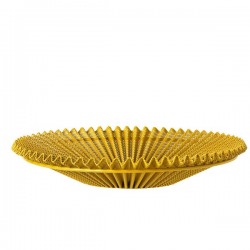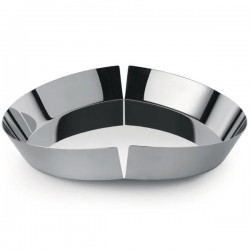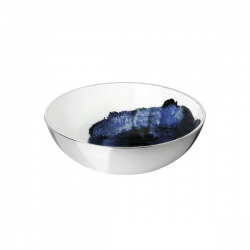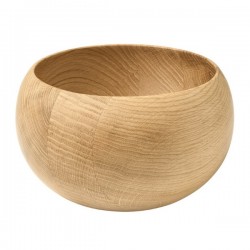Gubi Matégot Fruit Bowl
Mathieu Matégot's organic forms and lightness of touch create a sense of joy and the ground breaking and innovative techniques that he applied resulted in unique aesthetics and, above all, contemporary designs. Today, Matégot's designs are equally fit for the purpose as when they were originally conceived, and his legendary designs are both timeless and classic.
The Nagasaki chair is one of few three-legged chairs and is still Matégot's best-known piece. It is included in the permanent exhibition at the Vitra Design Museum. The Copacabana chair is included in the design collection at the Museum of Decoratives Arts in Paris and the design collection at the Georges Pompidou Centre, National Museum of Modern Art, Industrial centre, Beaubourg, Paris.
Gubi's collection of original Mategot design includes The Nagasaki Chair & Stool, The Dedal Shelf, Kangourou Table, The Mategot Coatrack & Trolley, The Demon Shelf System and the Copacabana Chair and Table.
-
Mathieu Matégot
Mathieu Matégot (1910 - 2001) was a Hungarian designer and architect. After studying at Budapest's school of art and architecture, he settled in France in 1931. He was a volunteer in the French army, was captured and not released until 1944. After returning home, he started producing handmade furniture in Paris. Matégot's organic forms and lightness of touch create a sense of joy and the ground breaking and innovative techniques that he applied resulted in unique aesthetics and furniture designs. He was the first person to combine metal tubing with perforated sheet metal; ritigulle, a technique he patented and also a pairing that particularly characterizes his work. Like many of his peers Mategot travelled the world in search of inspiration, techniques and upon return transformed these impressions into his own unique designs and interpretations. Wether it was industrial processes or aesthetics, he always collected and interpreted - he even patented and set up his own production to apply these new technologies into his designs, He was a true innovator of his time! In the 1950's - also the one decade - that he devoted to the design of furniture and interior accessories, he created a wide range of distinctive designs that today is considered iconic and contemporary. To ensure quality in the production of his own designs - Matégot set up two of his own workshops - Société Mategot, one in Paris that employed up to twenty workers and a second in Casablanca, Morocco. Both manufactured in limited numbers for up to 200 items and continued until 1959 when Mategot abruptly ended his production and began his work on tapestry, which he would continue for the rest of his career.


 EUR
EUR



































